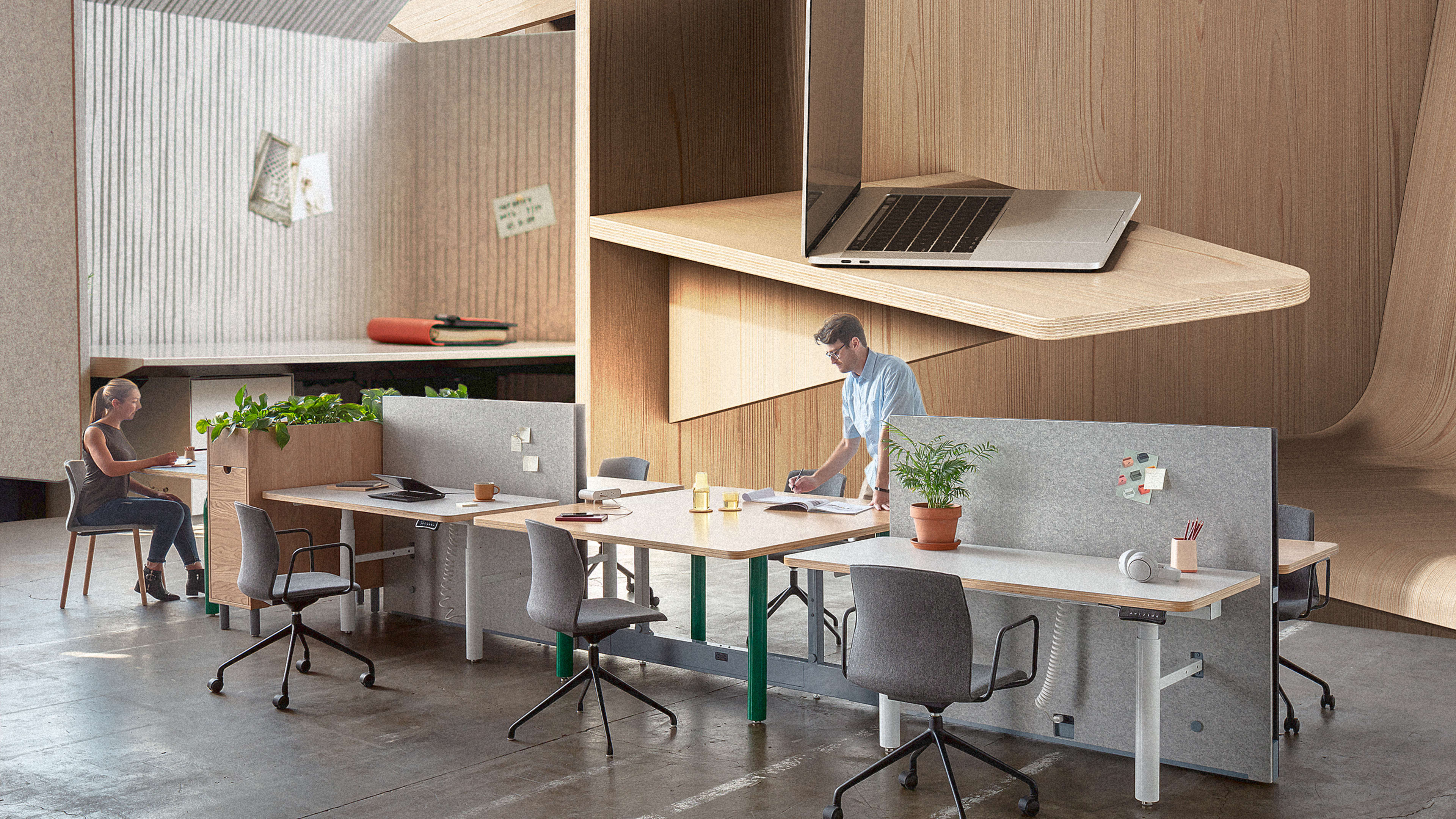It took more than 50 years, but the cubicle may finally be having its moment.
Designers invented the now-commonplace workstation in the late 1960s as a way to combat the noise and lack of privacy in open-plan offices lined with rows of desks. The semi-walled cubicle was an idealistic solution to an inherently human problem: people want privacy when they work, but not so much privacy that they shut out the world. They want to be able to focus, but not at the expense of connection.
The concept was great, in theory. The execution, however, left many workers feeling isolated in a sea of monotonous cubes. But in the post-pandemic era—when employees are returning to offices that are half-filled and buzzing with video-call noise—the prospect of even a half-private space is increasingly attractive.
Companies, office designers, and furniture manufacturers are all recognizing that the ideas behind the cubicle make a lot of sense in today’s hybrid work world. New types of cubicles are now making their way into offices, with designers reconsidering and reinventing the form to account for unprecedented conditions of how and where people work today. The pandemic has forced a reconsideration of the workstation. Can the cubicles of 2023 finally achieve what the original cubicle intended?
Recognize your brand’s excellence by applying to this year’s Brands That Matter Awards before the early-rate deadline, May 3.
